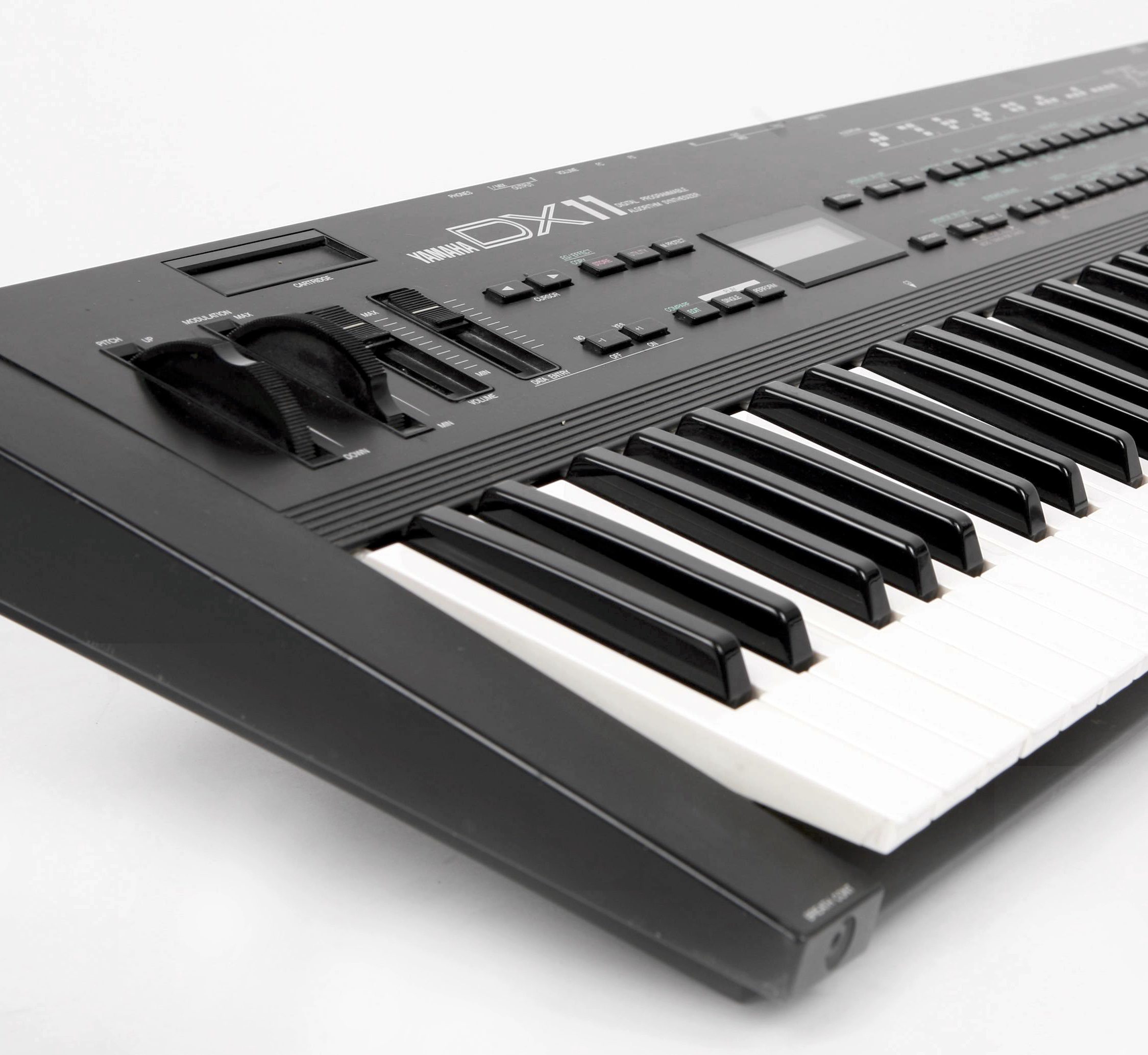


The sounds and expression are top notch – DX basses and bells sound far mightier than they do on lowlier DX-series synths. However, our go-to synth wizard suggested I might be very mistaken when it came to the DX-1, and a few moments playing through some presets swiftly revealed this to be the case: this is an awesome-sounding beast, very playable (though the keys are pretty heavy) and very much deserving its place among the hallowed analogue classics we drool over. To my ears, the all-conquering rise of the DX-7 (alongside the over-use of gated reverb on snare drums) signifies a time when most recorded music sold its soul. I’m not alone: Mike and I had a wee grumble about this when we spoke about us selling his DX – hence his having mostly-used it as a controller keyboard when it was installed in his studio in France. I found it near-impossible to program and didn’t enjoy the tinkly sounds it emitted (this predates my later transition to sonic adventurer by some years). I have to say I wasn’t bowled over at the prospect of having a DX in the building – I was sold a more lowly variant back in the 80s when I ignorantly entered a music store looking for ‘a keyboard’. Details of the service are available on request. It has had a complete overhaul by a Yamaha expert and is in full working order.

Yamaha built these to impress, not to a price point (they originally retailed at around £10,000 in 1984 – around £35,000 in today’s money). It offers 32 note polyphony and superb sonic performance thanks to the carefully-selected components. Uniquely for a vintage synth, it features polyphonic aftertouch. A veritable behemoth weighing around 50 kilos, with 73 full-length weighted wooden keys and a wooden case. The most important thing to understand is how operators (or oscillators) can interact each other within an FM matrix.This DX-1 is one of only 140 built: they were the flagship of the all-conquering Yamaha DX series of FM digital synths. While the inner-workings of FM synthesis are sophisticated, you can still apply it to your custom synth patches with general ease. To duplicate the patch in the video, perform a voice initialization, and then make these changes: If you do in fact own a Yamaha DX11, here are the steps provided in the description that outlines what takes place in the video. Even if you don’t own this synth, the underlying concepts of FM can be applied to any synthesizer that supports frequency modulation. In this video from Youtuber Synthesizer Keith, we receive a thorough explanation of how FM (frequency modulation) synthesis works on the Yamaha DX11.


 0 kommentar(er)
0 kommentar(er)
